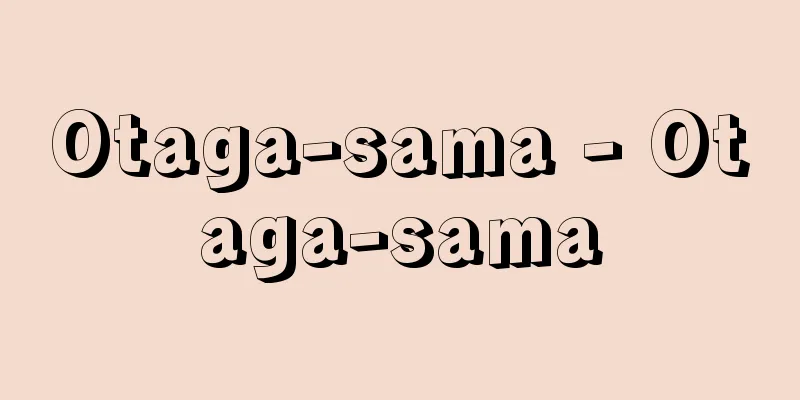Before dawn - Yoakemae

|
A full-length novel by Shimazaki Toson. It was serialized in Chuokoron four times a year from 1929 to 1935 (Showa 4-10). The first part was published in 1932, and the second in 1935, both published by Shinchosha. This historical novel depicts the turbulent period of the Meiji Restoration, centering on the extraordinary life of Aoyama Hanzo (modeled after Toson's father, Masaki), who served as head innkeeper, village headman, and wholesaler in Magome-shuku on the Nakasendo road, and highlights the suffering of "young lives" seeking liberation from oppression. Hanzo, who was fascinated by Hirata school of national studies and wished to escape the oppression of the feudal system and enjoy the free development of life, dreamed of a restoration to "a world where there were only kings and people in this world" and was ecstatic at the realization of the restoration of the monarchy, but the tone of the reforms after the Restoration was one-sided Western-oriented civilization and enlightenment. Disillusioned by the oppression and disregard for Shintoism seen in the Kiso forestry issue, he was charged with a crime when he dedicated a waka poem he had written expressing lamentations about Western encroachment to a procession for Emperor Meiji, and gradually went insane, eventually setting fire to Bodai Temple and confining himself to a prison cell where he suffocated to death. As the culmination of Toson's literary work, this masterpiece examines the issues of Japan's modernization and cultural continuity through the fateful family lineage that Toson has consistently pursued and the issue of his father, who lies at the origin of this lineage, and gives a sense of the presence of "the great nature" that embraces the destiny of the individual. The first part of the play "Before Dawn," adapted by Tomoyoshi Murayama, premiered in November 1934, and the second part in March 1936, directed by Sakae Kubo, at the Tsukiji Little Theater. The play depicts the flow of the times on a full stage in the Honjin residence, with equipment by Kisaku Ito, throughout the entire play, and is a landmark in the history of new theater. [Shinsuke Togawa] "Before Dawn, all four volumes (Iwanami Bunko/Shincho Bunko)" Source: Shogakukan Encyclopedia Nipponica About Encyclopedia Nipponica Information | Legend |
|
島崎藤村の長編小説。1929~35年(昭和4~10)にかけて年4回の割で『中央公論』に連載。第一部は32年、第二部は35年、ともに新潮社刊。中仙道馬籠(なかせんどうまごめ)宿で本陣、庄屋(しょうや)、問屋(といや)を兼ねた青山半蔵(モデルは藤村の父正樹)の数奇な生涯を軸として、幕末維新の動乱期を描き、抑圧からの解放を求める「若い生命」の苦しみを浮かび上がらせた歴史小説。平田派の国学に心酔し、封建制度の圧迫を脱して生命の自由な発展を願う半蔵は、「この世に王と民しかなかつたやうな上(かみ)つ世(よ)」への復古を夢みて王政復古の実現に狂喜したが、維新後の改革の基調は西洋一辺倒の文明開化だった。木曽(きそ)山林問題にみられる圧政や神道軽視の風潮に失望した彼は、西洋の侵食を憂うる自製の和歌を明治天皇の行列に献じて罪に問われ、しだいに狂気に陥り、ついに菩提(ぼだい)寺に放火、座敷牢(ろう)に押し込められて悶死(もんし)する。藤村文学の到達点として、藤村が一貫して追求してきた宿命的な家系とその原点に位置する父の問題を通じて、わが国の近代化や文化の連続性の問題を考察し、個人の運命を包み込む「大きな自然(おのずから)」の存在を感じさせる大作である。 なお、村山知義(ともよし)が脚色した戯曲『夜明け前』は第一部が1934年11月、第2部が36年3月、それぞれ久保栄(さかえ)演出で新協劇団が築地(つきじ)小劇場で初演。全幕を通じて伊藤熹朔(きさく)装置の本陣宅の一杯舞台で時代の流れを表現し、新劇史を飾る作品となった。 [十川信介] 『『夜明け前』全四冊(岩波文庫・新潮文庫)』 出典 小学館 日本大百科全書(ニッポニカ)日本大百科全書(ニッポニカ)について 情報 | 凡例 |
Recommend
Meeting point - Kaiyousho
...The same Wang Pu also wrote the Five Dynasties...
Kannichi - Kannichi
Also called Kukan-bi. A day that was avoided in th...
Kamikoshiki [village] - Kamikoshiki
A village in Satsuma District, Kagoshima Prefectur...
Kingi, W. (English spelling) KingiW
...The Maori rebelled against the pakeha (white p...
Kokurizome
〘 noun 〙 The act of pinching parts of a piece of c...
Hahn
German chemist. He obtained his degree in organic...
Tang Dynasty Reports - Toufu Setsugaki
Information from overseas brought by Qing merchant...
Terek sand‐piper
A bird of the family Scolopacidae in the order Cha...
Festival of Sacrifice
...Eid al-Adha (also called the Lesser Feast in T...
Petition - Chinjo
In the medieval litigation system, a document sub...
Basic Salt
...In this case, the KH 2 PO 4 and K 2 HPO 4 obta...
Throne - Gyokuza
The seat of the Emperor or King. Source: About Sho...
British roll - British roll
〘 noun 〙 A way of tying women's hair. A style ...
Overalls
These are work trousers with a bib, made of strong...
Forcade, TA (English spelling)
…Despite the persecution during the French Revolu...









![Ayabe [city] - Ayabe](/upload/images/67cadacfb951f.webp)